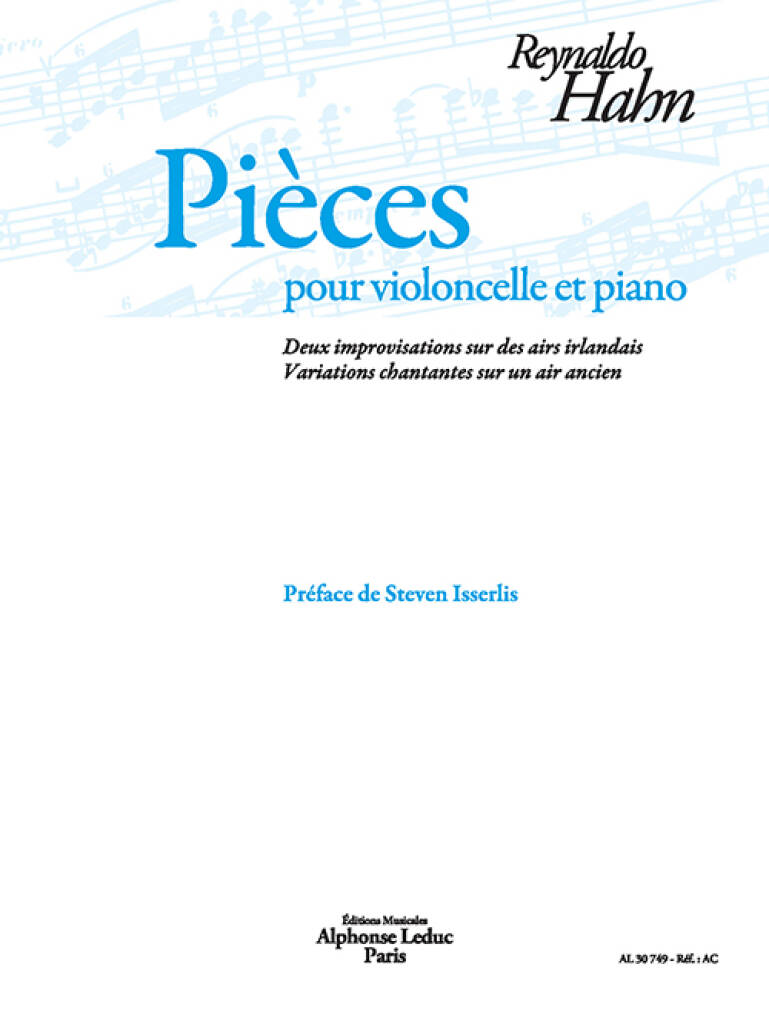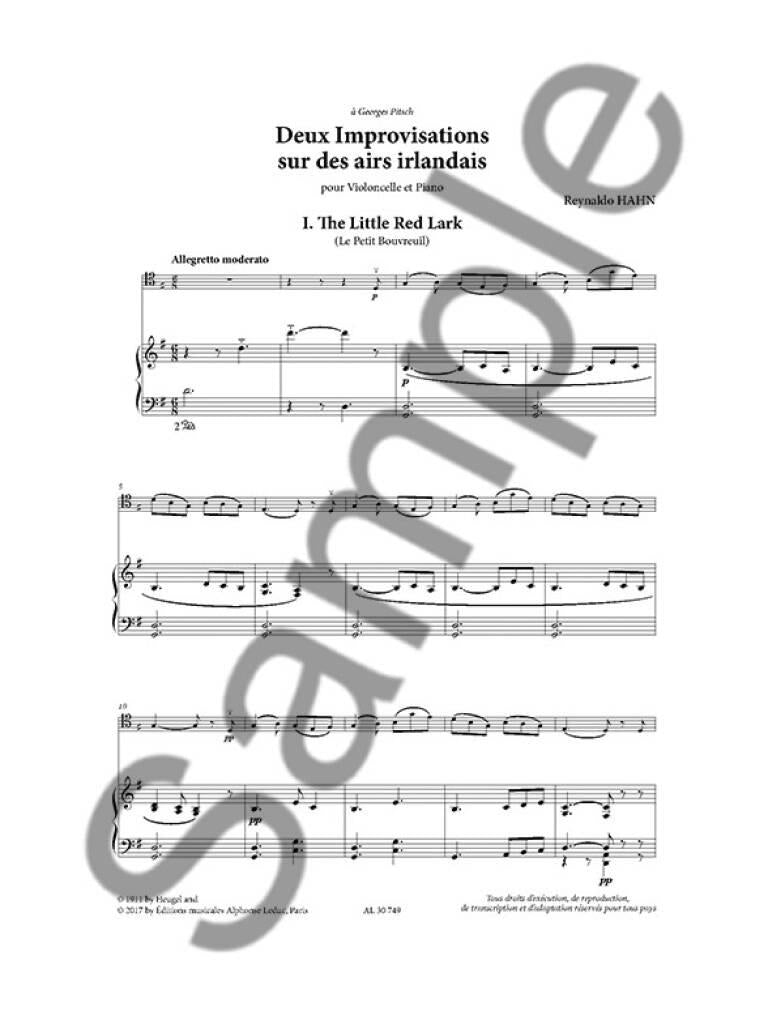Hahn: 2 Improvisations on Irish Airs
Expected to ship in about a week.
- Composer: Reynaldo Hahn (1875-1947)
- Instrumentation: Cello, Piano
- Work: 2 Improvisations sur des airs irlandais (2 Improvisations on Irish Airs) (1911)
- ISMN:
- Size: 8.9 x 11.8 inches
- Pages: 24
Description
For quite some time, posterity remembered Reynaldo Hahn (1874-1947) for just a handful of songs and the operetta Ciboulette , overlooking the incredible diversity of a catalogue as eclectic as it is appealing.Yet his chamber music contains many little-known treasures: thus, cellist Steven Isserlis, in his preface, hastens to hail the first modern edition of these two scores, which he regularly plays in recital, so much does theirbeauty enchant the audience.
Published in 1911, the Two Improvisations on Irish Airs for cello and piano turn out to be the transcription of his first and third Preludes for piano four hands (1894).These folk themes come from the collection Songs of Old Ireland , published 12 years earlier by Charles Villiers Stanford: gracefully and tenderly, The Little Red Lark unfurls a melancholic tune of which the regular foundation respects the breadth of phrase typical of folk songs; in The Willow-Tree , the lover begs his beloved in vain to take him in her arms one last time before he lies down, lifeless, in the shade of the tree.
Beyond this sensitive exploration of the Irish soul, Hahn offers us a journey into the past: the Variations chantantes sur un air ancien develop a theme borrowed from Cavalli's opera Xerse. in this aria (1660 version: Act IV, sc. 6), Ambassador Periarco dreams of moving away from court intrigues to be able to taste the pleasures ‘to which the gods have destined him'. Reynaldo Hahn's variations succeed in maintaining the sweet simplicity of this theme, as noble as it is refined.
Publishers use a lot of words to describe what they sell, and we know it can be confusing. We've tried to be as clear as possible to make sure you get exactly what you are looking for. Below are descriptions of the terms that we use to describe the various formats that music often comes in.
Choral Score
A score for vocalists that only contains the vocal lines. The instrumental parts are not there for reference. Generally, cheaper than a vocal score and requires multiple copies for purchase.
Facsimile
Reproductions of the original hand-written scores from the composer.
Full Score
For ensemble music, this indicates that the edition contains all parts on a single system (there are not separate parts for each player). In larger ensembles, this is for the conductor.
Hardcover
Hardbound. Generally either linen-covered or half-leather.
Orchestral Parts
Similar to a wind set, this is a collection of parts. In the case of strings, the numbers listed are the number of copies included, though generally these are available individually (often with minimum quantities required).
Paperback
When publishers offer multiple bindings (e.g. hardcover) or study scores, this is the "standard" version. If you're planning to play the music, this is probably what you want.
Performance / Playing Score
A score of the music containing all parts on one system, intended for players to share. There are not separate parts for each player.
Set of Parts
For ensemble music, this indicates that there are separate individual parts for each player.
Solo Part with Piano Reduction
For solo pieces with orchestra, this is a version that contains a piano reduction of the orchestra parts. For piano pieces, two copies are typically needed for performance.
Study Score
A small (think choral size) copy of the complete score meant for studying, and not playing. They make great add-ons when learning concertos and small chamber works.
Vocal Score
A score prepared for vocalists that includes the piano/organ part or a reduction of the instrumental parts.
Wind Set
For orchestral music, this is a collection of wind and percussion parts. The specific quantities of each instrument are notated.
With Audio
In addition to the printed music, the edition contains recordings of the pieces. This may be an included CD, or access to files on the internet.
With / Without Fingering (Markings)
Some publishers prepare two copies - a pure Urtext edition that includes no fingering (or bowing) suggestions and a lightly edited version that includes a minimal number of editorial markings.



